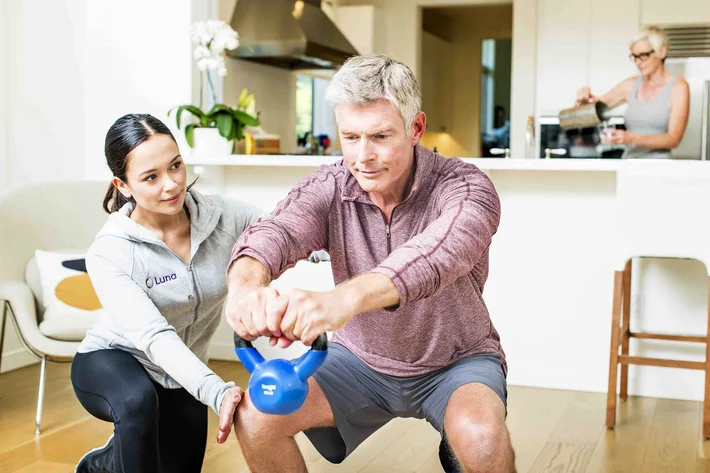
Meet with the best tendonitis physical therapists in Washington D.C., District of Columbia
Washington D.C., District of Columbia, Luna’s experienced team of physical therapists specializes in the reduction of the symptoms associated with tendonitis. With a professional regimen of passive and active treatments, patients with tendonitis can get back to the activities they love soon and safely. Our licensed PTs will work with you to create a therapy plan that addresses your specific goals and concerns.
With Luna, patients can get tendonitis treatment in the comfort of their homes. It’s physical therapy, delivered.

What is tendonitis?
Tendonitis (or ‘tendinitis’) is defined as the inflammation or irritation of any tendon in the body. Tendons, the thick cords attaching the muscles to the bones, can become irritated or inflamed with repetitive minor impacts or with a single major impact. The most commonly affected tendons are located in the elbow, the base of the thumb, the shoulder, the hip, the knee, and the Achilles tendon.
Pain from tendonitis can be sudden and severe, or it can build gradually over time. In severe cases, patients may experience restricted motion in the affected joint. Tendonitis is most common in patients over the age of 40, although anyone — and athletes especially — can develop the condition as a result of overuse or misuse of the tendons.
Source: WebMD

What causes tendonitis?
Because tendons become less flexible with age, most cases of tendonitis occur in patients over the age of 40. The greatest risk factor for tendonitis, however, is a job or hobby that involves repetitive motion. It’s possible for tendonitis to be caused by a sudden injury, however it’s far more likely to develop as a result of frequent and repetitive motions.
Tendonitis is quite common in patients whose jobs involve awkward positions, overhead reaching, or repetitive motions, and in patients who play baseball, basketball, golf, or tennis.
The most common causes of tendonitis include:
- Age (over 40)
- A job or hobby that requires frequent repetitive motion
- Poor sports form or improper technique
- Sudden impact or injury to the tendon














